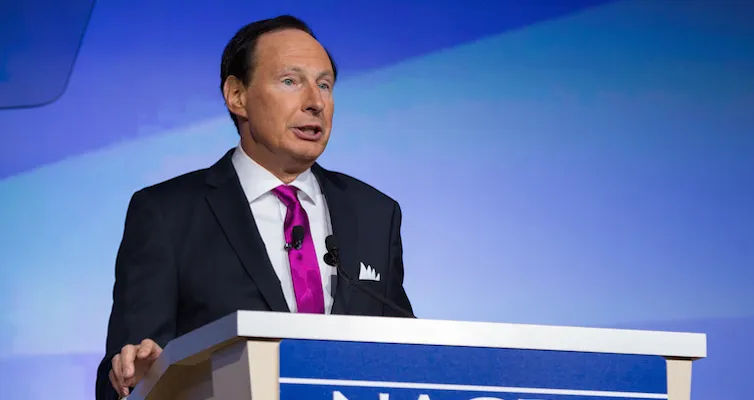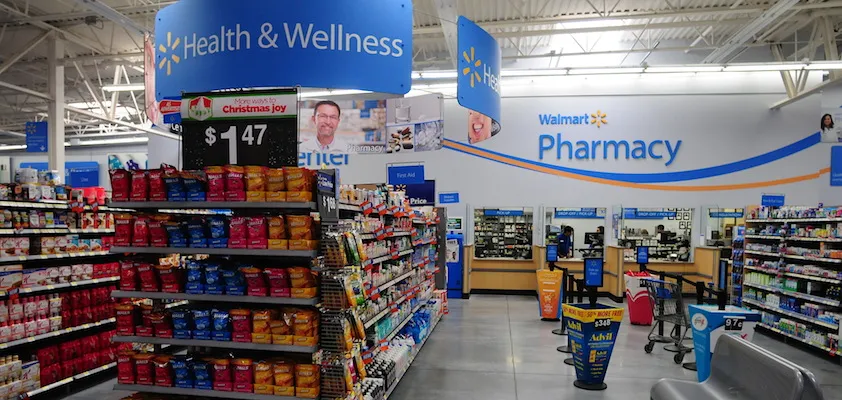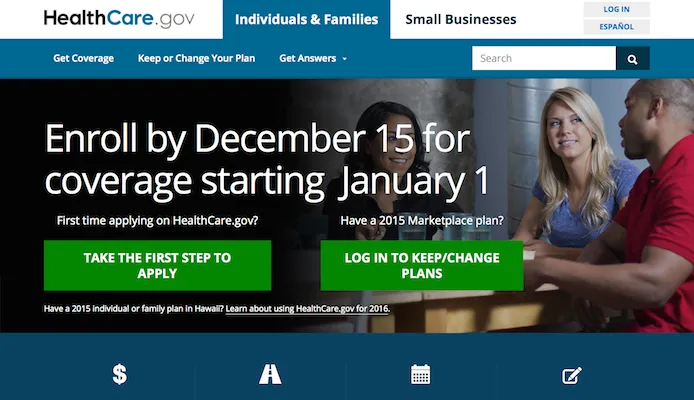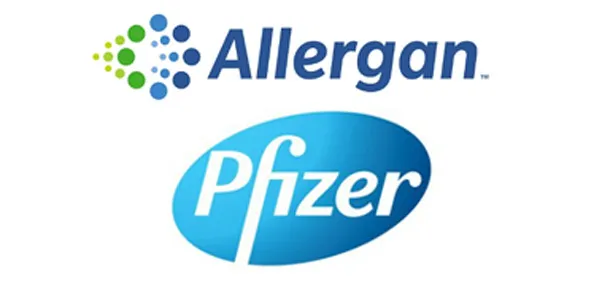ARLINGTON, Va. — An apt symbol for what Steve Anderson’s leadership has meant to the National Association of Chain Drug Stores is certainly RxImpact Day. The annual event brings together pharmacy advocates in the nation’s capitol to meet with members of Congress and officials in the executive branch to help them better understand the essential role that community pharmacy plays in effective health care.
Steve Anderson, NACDS president and chief executive officer
This year’s installment in March involved 350 pharmacy executives, practitioners and students in 460 meetings, representing 85% of congressional offices. Every freshman member of the House and Senate, as well as every member who serves on a committee with jurisdiction over health care policy, was involved. Further evidence of NACDS’ stature in Washington was provided by the presence of Anderson and several board members at last month’s White House ceremony launching the Health Care Learning and Payment Action Network, which was addressed by both President Obama and Secretary of Health and Human Services Sylvia Burwell.
Inaugurated on Anderson’s watch, RxImpact Day embodies what NACDS is all about — government affairs and communications initiatives designed to raise the profile of chain pharmacy, and programs that involve members and enhance the services delivered to them. By keeping the association focused on those priorities, he has greatly increased its impact.
“We’ve been following our strategic plan for the last eight years, so we can incorporate a lot of these new issues, such as providers status and emerging scope of practice,” Anderson comments in the interview below. “Everything we do relates to how we communicate the value of pharmacy.”
The efforts of Anderson, who joined NACDS eight years ago, and his staff, together with an engaged and energized membership base, have earned chain pharmacy a seat at the table whenever health care policy is under consideration, both in Washington and in state capitols.
CDR: What are NACDS’ priorities for 2015, and how do they fit with your strategic plan of emphasizing government affairs, communications and member services?
ANDERSON: We’re off and running with our 2015 strategic plan, which was approved by our board at the end of 2014.
Following the midterm congressional elections last fall, we now have about 70 new members of Congress that we need to educate, and there are many more members for whom pharmacy must be kept top of mind.
It seems we’re always in the middle of an election cycle, and that’s definitely the case in 2015. We just had this wave election where the Republicans picked up the Senate and now control both houses of Congress. Coming up are the 2016 presidential and congressional elections, and although NACDS doesn’t get involved in presidential elections, we do get involved in the congressional elections. These races will be interesting in terms of the number of seats the Republicans and Democrats are trying to protect in the Senate.
In 2016 there will be 24 Republicans and 10 Democrats who will be up for reelection for the Senate — so it’s the opposite situation from 2014. Seven of those 24 Republican incumbents are in states that President Obama won in both 2008 and 2012.
It seems we have a wave election at least every two or four years, but our strategic vision is pretty constant throughout. We continue to do what we have done traditionally, which is to argue for fair and accurate pharmacy reimbursement.
NACDS will be closely involved with Tricare [the health care program for military personnel, retirees and their dependents] now that a Military Compensation and Retirement Modernization Commission has been charged by Congress to look for efficiencies in compensation and benefits while keeping high standards.
NACDS will still be advocating for such things as the “any willing provider” provision that CMS [Centers for Medicare and Medicaid Services] proposed in its Medicare Part D rule but later withdrew. We’re also doing some interesting work in terms of expanded pharmacy services with the provider status bill [Pharmacy and Medically Underserved Areas Enhancement Act, reintroduced in Congress in January] and with our work at the state level on expanding the scope of practice, so that pharmacists can practice to the level of their education and training. There are a lot of so-called traditional issues that we work on that set the stage for everything else we’re doing.
We’ve been following our strategic plan for the last eight years, so we can incorporate a lot of these new issues, such as provider status and emerging scope of practice topics. Everything we do relates to how we communicate the value of pharmacy, whether in terms of government affairs, communications or enhancing the image of the industry and our member services. This is really what our strategic plan is all about. It should be a really exciting year.
CDR: What do the 2014 election results mean for pharmacy issues or the prospect of getting some of these things you’re working on done?
ANDERSON: Even when there is a shift in power, as in the Senate, we still have champions and we’re in very good shape on a bipartisan basis, particularly in terms of the committees of jurisdiction in the Senate and the House where our issues are brought up.
Sen. Charles Grassley [R., Iowa] is now an original sponsor of the provider status bill [S. 314]. Sen. Lamar Alexander [R., Tenn.] is the new Republican chairman of the Health, Education, Labor and Pensions Committee, while Sen. Orrin Hatch [R., Utah] is now chairman of the Finance Committee. All three of those senators understand our issues.
We have educated both Republicans and Democrats on the value of pharmacy and the role that NACDS members play in the health care delivery system in our country. Through the seventh NACDS RxImpact Day on Capitol Hill which was held in March, pharmacy advocates met with every member of Congress who serves on a congressional health care committee, and with every member of Congress who was newly elected in November 2014.
In total, the event created meetings with more than 460 congressional offices on vital pro-patient and pro-pharmacy issues — that equates to meetings with more than 85% of the U.S. Congress. In addition, the NACDS board of directors members were invited to the White House for an event with the president and with Secretary of Health and Human Services [HHS] Sylvia Burwell regarding the newly announced Health Care Payment Learning and Action Network.
And furthering efforts to help educate lawmakers about pharmacy priorities, the Patient Access to Pharmacists’ Care Coalition — of which NACDS is a member — launched a Washington, D.C., advertising campaign to urge passage of the pharmacist provider-status legislation.
Anderson with Rep. Cathy McMorris Rodgers (R., Wash.).
CDR: Is it fair to say that pharmacy has bipartisan support?
ANDERSON: There’s no doubt about that. What I find most gratifying about our efforts is that we have gone to Capitol Hill and positioned ourselves as disrupters in health care delivery, but we always work within the free market system. As I said at NACDS’ Annual Meeting last year, we’re not playing checkers; this is really three-dimensional chess with a lot of different moving parts.
In the NACDS RxImpact Pharmacy Tour program, members of Congress — Republicans and Democrats alike — are talking to pharmacists and patients in our members’ stores. When the members of Congress come out of those stores, they understand not only the impact that pharmacy has on the economy but also the impact we have on the lives of their constituents, which is extremely important.
The NACDS members, staff and board members have done an excellent job of communicating that value on a bipartisan basis.
CDR: Are you optimistic that some of these issues will get resolved this year?
ANDERSON: I tell our staff that we shouldn’t ever confuse activity with results. With the volatile nature of our political discourse, you need a strong trade association to build the case for pharmacy. We will have some interesting opportunities this year.
Returning to the bipartisan concept: There were 170 cosponsors of the Medication Therapy Management Empowerment Act in the House last year out of a total of 435 members, and that figure doesn’t include the members who were simply supporting the bill. And out of those 170 cosponsors 85 were Republicans and 85 were Democrats. That’s a perfect illustration of bipartisan support for pharmacy.
When we go to Congress to talk about provider status and other issues, we are going to have to explain that pharmacists are not considered providers according to the technical, formal definition under Medicare Part B, which often comes as a surprise to lawmakers.
After we talk to lawmakers about the provider status bill, MTM and other issues and educate them, what drives them to cosponsorship may not be in the details of the legislation, but their understanding of the role pharmacy plays in health care delivery and in reducing costs and improving lives. That’s what we’re all about.
CDR: Why was the MTM bill not passed in the House last year when there were that many cosponsors from both parties?
ANDERSON: Members of Congress have many priorities, but eventually they get to the right place. In the case of the MTM bill, Rep. Fred Upton [R., Mich.], who is chairman of the House Energy and Commerce Committee, has put together a group of stakeholders to work out the differences. Rep. Cathy McMorris Rodgers [R., Wash.], who chairs the House Republican Conference, remains very engaged and committed on this issue. Sen. Pat Roberts [R., Kan.] and the bipartisan original cosponsors of the Senate legislation in this Congress are demonstrating true leadership.
The interesting aspect about health care is that there’s no shortage of push and pull on pieces of legislation, depending on the nature of the industry. The health care piece of the legislative pie is only so big financially, so that increases the competition pretty dramatically. But we had an expression at an association I used to work for: If you’re not at the table, you’re on the menu. NACDS is definitely at the table.
We have to find the right vehicles for the provisions we’re advocating for. In this age of omnibus legislation rarely does a bill go through as a separate entity; it will generally be attached to a much larger bill. We’re hoping that some of the pharmacy measures will be attached to some other piece of legislation.
CDR: Don’t you think, though, that with health care being such a big part of the economy and affecting everyone, people are going to have to deal with it all the time?
ANDERSON: Of course, and they discovered that after the Affordable Care Act was passed. People realized that they have to be empowered to handle their own health and their own insurance. Previously, if you had employer-based insurance, you didn’t really worry about it. You got a statement in the mail, you opened it up, and if there wasn’t a check in it you probably ripped the statement up and threw it away, thinking that’s the way the system worked.
Now people realize it’s a lot more complicated than that. It’s probably good for them to understand how our health care insurance system works. I’m not sure they have quite figured it out yet, but they understand the concept better than they used to.
A good deal depends on how the Supreme Court rules this summer on the latest challenge to the Affordable Care Act debate [King v. Burwell].
CDR: You mentioned the ACA. What impact has that had on pharmacy up to this point?
ANDERSON: Just the consideration of the Affordable Care Act allowed NACDS to communicate the value of pharmacy. The health care debate was front and center, and this allowed us, on a bipartisan basis, to go in and talk about the pharmacist’s role. There were members of Congress who didn’t support the Affordable Care Act but who backed the pharmacy piece of the legislation.
Obviously more patients have access as a result of the exchanges and the expansion of Medicaid. The shift to value-based health care delivery and the concept of a team-based approach, which raises the profile of the pharmacist within the health care delivery system and especially among accountable care organizations and medical homes, has been beneficial.
NACDS did not take a position on the entire bill because we knew there would be unintended consequences of this legislation, but we hope that provisions related to AMP [Average Manufacturer Price], MTM and other issues are maintained no matter what happens.
With the current split in our government, with the Democrats controlling the White House and Republicans controlling Congress, not much is going to be done to change the Affordable Care Act legislatively, although the leadership in both the House and the Senate have asked committee chairs to come up with replacement legislation on the Republican side.
If the Supreme Court decides to throw out portions of the law as a result of the subsidies and the federal exchanges, that might require Republicans and Democrats to get together and try to resolve this issue. And you can’t pick up a copy of The Wall Street Journal, New York Times or Washington Post that doesn’t have a columnist providing the right solution depending on how the Supreme Court rules. But we’ll have to cross that bridge when we come to it.
The situation is still in a state of flux, and probably always will be as long as we have these big pieces of legislation. Previously a single-issue bill would be passed, as opposed to these thousand-page omnibus bills today. And when they get so big, there are always technical corrections that have to be made and fine-tuning to be done. It will be interesting.
CDR: In this political climate, with Congress and the administration controlled by opposite parties, are even technical corrections going to be possible?
ANDERSON: It would be difficult. But if the Supreme Court ruling has an impact on accessibility and the number of people who can participate in the exchanges, so that people can no longer afford their health insurance, then some sort of legislation will probably result. Not much will happen until the court decides.
CDR: How do you think the Supreme Court will rule?
ANDERSON: This court seems to be rather practical in terms of the impact its rulings have on the country and the economy. I’m guessing it will be a 5-4 decision one way or the other.
CDR: Are there changes that NACDS would like to see made to the ACA legislation? Are there elements that you would like to see fine-tuned?
ANDERSON: We want to maintain certain provisions, but if new things are proposed, we’ll take a look at them.
In every piece of legislation, especially a large one, there are some good provisions and not-so-good provisions, depending on one’s perspective. It depends on what association you represent and what part of health care the association is involved in.
If provisions related to provider status, MTM or other matters NACDS is interested in are included in any new legislation, that would get our attention. We’re also interested in Rep. Upton’s “21st Century Cures” initiative. We have sent him some ideas, and we’ll see how those develop.
NACDS is focused on very niche issues and, as a result, there’s a lot of nuance that goes into what we do, and a lot of give and take.
A great opportunity for creating that give and take occurs during the NACDS RxImpact Day on Capitol Hill. As I previously mentioned, this was a banner year for the event. It’s really about the personal connections that the NACDS board and pharmacy advocates make at this annual event. One of my greatest memories happened during last year’s RxImpact Day. The current NACDS chairman John Standley; Bob Narveson, who was our chairman last year; and I were waiting for a subway to go from the Capitol to the Senate offices, when Sen. Al Franken [D., Minn.] came up to us and asked how many cosponsors there were on the MTM bill. That kind of personal contact shows the progress we have made on a lot of these issues as a result of RxImpact Day, and that members of Congress do understand them.
CDR: You mentioned Medicaid reimbursement policy in connection with AMP. When is CMS going to release the Affordable Care Act FULs [Federal Upper Limits]?
ANDERSON: We’ll be seeing those this year sometime. This is one of the issues that was discussed at this year’s NACDS RxImpact Day on Capitol Hill.
It is important to have members of Congress communicate to CMS that they will take a close look at the rules the agency proposes to see whether they are appropriate for the industry, and that there needs to be a long lead time in order to implement them. The state Medicaid directors are supportive of an appropriate period of time for implementation.
CDR: You also mentioned the any willing provider provision, which was included in the proposed CMS rule on Medicare Part D. Where does that issue stand now?
ANDERSON: That rule was 700 pages long, and there were few items in it that weren’t opposed by at least someone. So, after a lot of political pressure, CMS pulled that rule. NACDS was supportive of the MTM section and the any willing provider portion of the rule.
The Ensuring Seniors Access to Local Pharmacies Act of 2014 [H.R. 4577], sponsored by Rep. Morgan Griffith [R., Va.], would allow any willing pharmacy serving the medically underserved to participate in prescription drug plan networks in Medicare as a preferred pharmacy if they are willing to meet the terms and conditions of the plan. So a piece of legislation is out there. CMS is still interested in this provision, even though the rule on Medicare Part D was pulled.
*Editor’s Note: To read the full interview with Steve Anderson, please see the April 27, 2015, print edition of Chain Drug Review.









